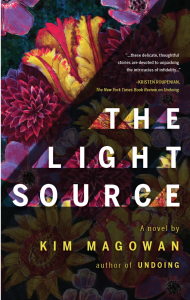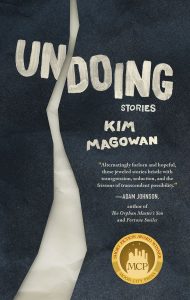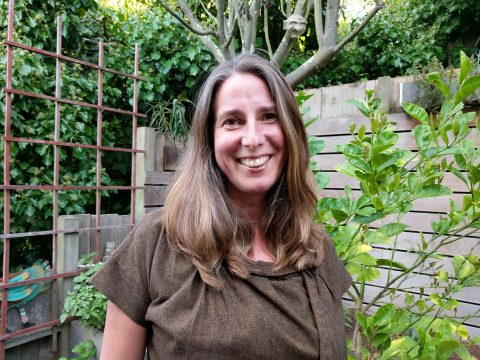Kim Magowan’s novel, The Light Source, is forthcoming from 7.13 Books in July. Kim will be giving away a copy of her book to the writer whose story she selects for publication!
Are there certain themes you find yourself returning to in your stories? Do you explore similar themes in your novel?
A lot of my stories are about relationships gone awry: cheating partners, dysfunctional parents, friendships that have fallen apart. George Saunders once said in an interview that most of his fiction takes up the issue of class conflict, and that he doesn’t feel that he as a writer can choose his subject matter—that it’s hardwired. That rings true for me. I’ve been writing about infidelity and toxic friendships since I was a teenager. I’m very interested in that moment where things turn: that’s the location I’m always trying to hunt down and pinpoint in my stories, the fork in the road. My forthcoming novel The Light Source has a romantic triangle at its center.
 What do you think flash fiction can do that longer stories can’t?
What do you think flash fiction can do that longer stories can’t?
There is no waste in flash. It’s a very exacting, disciplined form, which is why it’s so addictive. It’s like focusing a camera. Because flash is so short, it demands perfection. You can get away with a clunky line in a longer story, or a whole chapter about how to remove whale blubber in a novel (ahem)—but you really can’t in flash. I truly believe flash has made me a better writer. You can also be much more experimental with flash. Weird things will work in miniature that won’t work long. A list story or second-person story could get really monotonous at 4,000 words, but I love both forms in flash. Flash stories can be really strange and out-there: I love K.B. Carle’s crossword puzzle story, Michael Czyzniejewski’s outline story “The Braxton-Carter-VanDamme-Myers-Braxton-Carter Divorce: An Outline,” Michelle’s Ross’s deadpan block paragraph “Pam’s Head,” and Kathy Fish’s triptych “Three Likely Stories” that works almost like an anagram, where three characters (waitress, cook, and a man who walks into a restaurant) get repurposed in each iteration. My own “Madlib” story only works because it’s so short. So I love that quality of flash—how going small increases the potential for innovation.
 You teach at Mills College — and one of the courses you teach is Flash Fiction. Can you tell us a little bit about this class? How does teaching flash inform your own writing?
You teach at Mills College — and one of the courses you teach is Flash Fiction. Can you tell us a little bit about this class? How does teaching flash inform your own writing?
That class was a blast! Well, this is a very “no duh,” thing to say—along the lines that if you want to lose weight, you should eat less and exercise—but the only two ways to improve as a writer are to 1) write a lot 2) read excellent fiction. I’m an English professor; I’m a huge advocate of immersive reading. My students read a ton of flash—12 collections, plus Best Small Fictions 2018 and Wigleaf’s Top 50 2018—and even though it was a literature class, not a creative writing class, they all tried their hand at writing flash. They organized a reading earlier this week in Oakland, and I was frankly blown away by how great their stories were. That’s another virtue of flash: because it’s short, you have time to get it right. I don’t know if teaching ever informs my writing (though I do have a lot of teachers in my stories), but reading certainly does. One of my students’ very favorite stories was that excellent story Gwen Kirby published in SmokeLong: “Shit Cassandra Saw That She Didn’t Tell the Trojans Because at that Point Fuck Them Anyway.”
What kind of story would you love to find in your queue this week?
I want a “Damn, that’s great!” story. I want something that surprises and delights me. Blow my mind!


 The core workshop of SmokeLong Fitness is all in writing, so you can take part from anywhere at anytime. We are excited about creating a supportive, consistent and structured environment for flash writers to work on their craft in a community. We are thrilled and proud to say that our workshop participants have won, placed, or been listed in every major flash competition. Community works.
The core workshop of SmokeLong Fitness is all in writing, so you can take part from anywhere at anytime. We are excited about creating a supportive, consistent and structured environment for flash writers to work on their craft in a community. We are thrilled and proud to say that our workshop participants have won, placed, or been listed in every major flash competition. Community works.